Airspeed Indicator Markings Explained for Pilots
Oct 18, 2024
Learn to fly by mastering airspeed indicator markings and navigate with precision and ease. Novice pilots to experienced pilots, these instruments can change your flying life.
Dive into our comprehensive guide to enhance safety and elevate your skills to new heights. Keep reading to uncover these insights!
What is an Airspeed Indicator?
The airspeed indicator is more than just a number on a dial; it’s your constant companion in the cockpit, always keeping you aware of the airspeed.
This instrument is critical for controlling the aircraft, especially during critical phases of flight, like takeoff and landing where speed management is paramount. Indicated airspeed is the reading displayed on the aircraft's instruments.
By watching the airspeed indicator, you can adjust the throttle and controls to fly safe and efficient. Calibrated airspeed is the indicated airspeed corrected for instrumentation and position errors.
Each speed on the airspeed indicator has a purpose and importance in the flight envelope. Take Va, the design maneuvering speed for example.
This is the maximum airspeed the aircraft can withstand turbulence or abrupt control inputs without structural damage.
Conversely, going above Vne, the never-exceed speed will cause catastrophic failure of the aircraft’s structure. So, these speed limits give pilots the information to make informed decisions and make every flight safer.
The airspeed indicator also tells you the aircraft’s performance in different flight conditions.
For example, during cruise you want the right airspeed for fuel efficiency and during descent you want to manage speed to avoid over speeding and hydraulic system or pitch stability problems.
So, mastering the airspeed indicator is not just about the numbers but about the mindset, to be safe and efficient and fly with confidence and precision.
How Does an Airspeed Indicator Work?
The airspeed indicator is a clever bit of aeronautical engineering, it’s like the heart of the aircraft’s dashboard. It uses air pressure differential to tell you something, so you can make informed decisions in flight. Refer to the Airspeed Indicator Diagram below to visualize how this critical instrument functions.
The system uses air from the environment around the aircraft, it measures the air from the pitot tube and the static port.
This is important because it allows the instrument to measure the dynamic pressure changes caused by the aircraft moving through the air.
In more detail the pitot system collects dynamic pressure from the air as the aircraft moves forward. Think of it as catching wind in a tube that faces directly into the airstream. This is often housed in a small tube on or under the wing or nose of the aircraft.
The static port on the other hand captures ambient air pressure from a side mounted position, usually on the aircraft fuselage, that is not affected by the airstream.
Together these two components supply the airspeed indicator with the two pressure readings it needs to calculate the aircraft’s true airspeed.
Variations in air temperature affect air density, which in turn influences the calibration of the airspeed indicator based on the International Standard Atmosphere model.
By understanding how these two systems work together pilots get valuable insight into their flying, so they can perform and be safe at all times.
This allows them to read airspeed correctly from takeoff to landing. It makes the human and machine work in harmony, so safety and efficiency coexist and guides the aviator on their journey through the air.
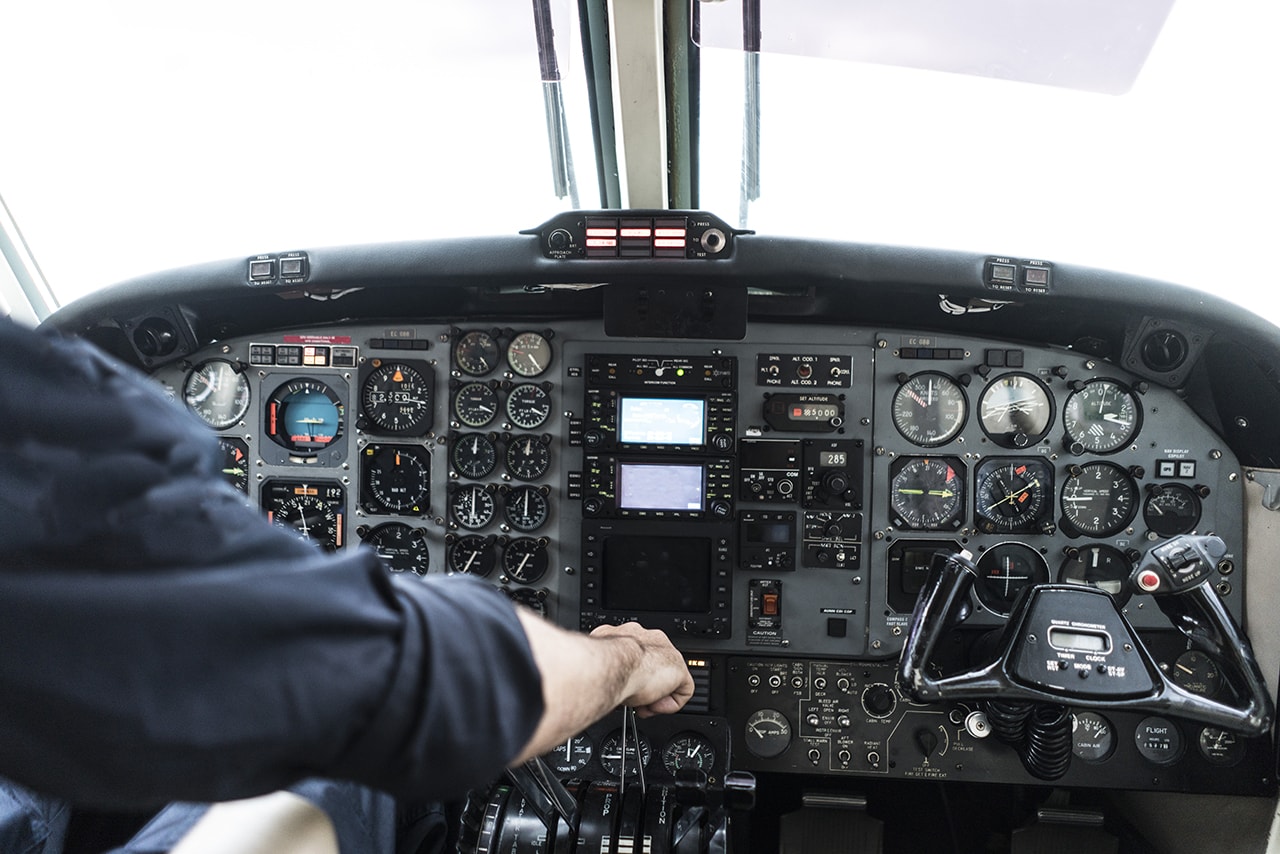
Airspeed Indicator Markings
White Arc – Flap Operating Range
The white arc on an airspeed indicator plays a crucial role in ensuring a smooth and safe flight experience during critical phases such as approach and landing. This range helps pilots clearly understand the boundaries within which the flaps can be safely extended, minimizing the risk of disruption during these vital times.
By staying within the white arc, aviators are empowered to execute maneuvers with enhanced control and precision, offering a comforting assurance of safety as they glide through the skies towards a secure landing.
Understanding the importance of the white arc means recognizing its contribution to optimizing aircraft performance. The lower limit, marked by the VSO, indicates the speed at which the aircraft stalls with the flaps fully extended—crucial data for maintaining lift during descent.
The upper limit, represented by VFE, signals the maximum speed at which the flaps can be safely deployed, preventing undue stress on the aircraft’s structure.
This maximum flap speed serves as the upper limit during approaches and landings, ensuring that the flaps operate within a safe range and maintain the aircraft's structural integrity.
This demarcation forms the backbone of safe flap operation, underscoring the intricate balance between performance and safety that defines every successful flight.
Green Arc – Normal Operating Range and Maximum Structural Cruising Speed
The green arc on an airspeed indicator is your friend, it’s the range where the aircraft is most reliable and safe to fly in. This is from the stall speed in clean config (VS) to the max structural cruising speed (VNO).
In this band the aircraft is stable and controllable, you can do maneuvers and fly in various conditions with confidence and ease.
Flying in the green arc simplifies the flying experience, reduces pilot stress and allows you to focus on situational awareness rather than constant speed management.
Knowing the normal operating range is key for pilots, it’s where the aircraft is at its best performance and provides a margin of safety from flying too slow or too fast.
The stall speed is the minimum speed the aircraft can fly without flaps and the max structural cruising speed is the speed not to exceed to avoid airframe stress and damage.
By flying in the green arc pilots get the balance between efficiency and safety and a smooth ride for everyone on board.
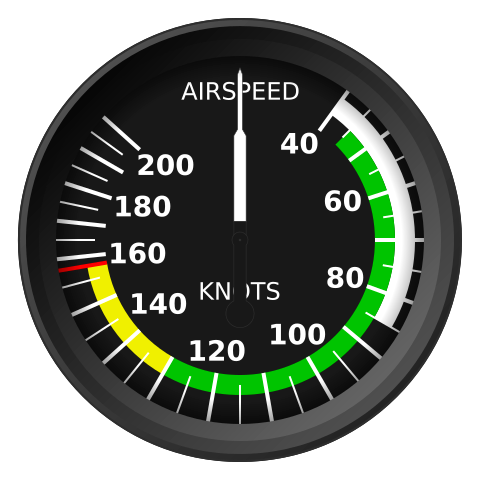
Yellow Arc – Caution Range
The yellow arc on the airspeed indicator is the caution range, a critical zone you need to be aware of. This range is between the green arc (normal operating range) and the red line (never exceed speed). Flying in this range requires caution as the aircraft performance is compromised and the risk of stall or loss of control increases.
The yellow arc usually goes from 1.3 to 1.5 times the stall speed (Vs), a buffer zone between the normal operating speeds and the maximum structural cruising speed (Vno). This caution range is a visual reminder to be vigilant and not to push the aircraft beyond its safe limits. By respecting the yellow arc you’ll be in control and not stressing the aircraft structure, so overall flight safety will be better.
Red Line – Maximum Airspeed
The red line on the airspeed indicator is a safety feature, the never-exceed speed (VNE). This is the maximum airspeed and a visual warning not to go past the structural limits of the aircraft which could lead to catastrophic failure.
You must stay below this line for safe operation. It keeps the aircraft within its design stress limits and prevents damage that could compromise flight safety. Pilots use this as a guide for their decisions especially in changing weather or high G maneuvers.
Knowing the red line is key to understanding the aircraft’s performance. It’s the engineering and design limitations built into the aircraft for speed and structure.
In short, sticking to the red line’s rules lets you fly with confidence knowing you’re within safe boundaries. That means safe and reliable flights for everyone on board.
Blue Line – Best Single-Engine Rate of Climb
The blue line on the airspeed indicator is a key reference for multi-engine pilots. It’s the best single engine rate of climb (Vyse). This is important when one engine fails as it’s the speed to climb at to get the best rate of climb possible in that situation.
Flying at the blue line speed ensures you can maintain altitude or climb even if an engine fails. This is critical for safe flying as it gives you the performance to manage an emergency and get back to a safe landing.
The blue line is marked slightly above the best rate of climb (Vy), so you have a visual reference to optimize climb and stability of the aircraft.
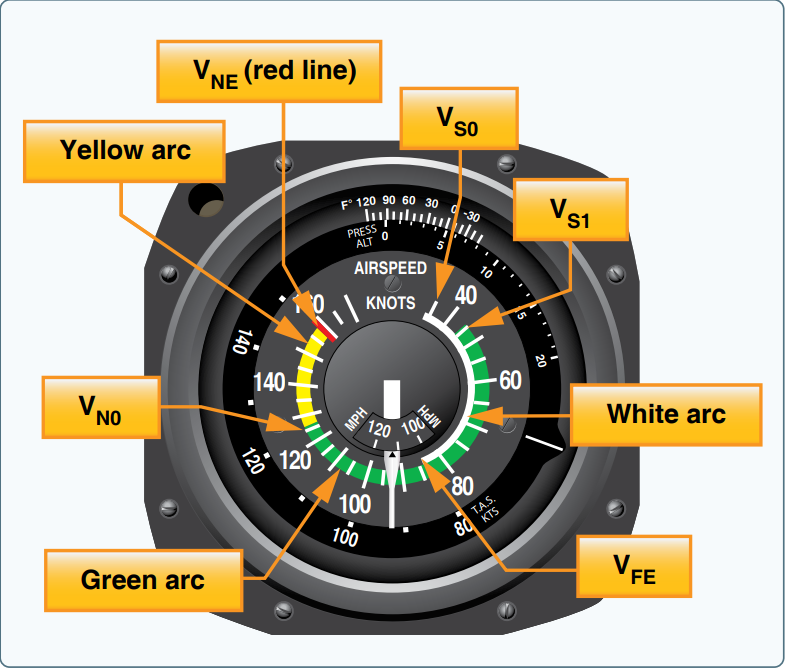
Critical Airspeeds for Safe Flight
In aviation, critical airspeeds are key to safe flight. Power off stall speed is the specific stall speed for an aircraft in different configurations, particularly important during landing and takeoff. This speed is critical for safe flight operations, with variations for maximum landing and takeoff weights based on aircraft configurations.
VSO is the stall speed in landing configuration. This is the slowest speed the aircraft can fly while configuring for a landing and is the safety margin during this phase.
Next, we have VFE which is the maximum flaps extended speed. This is the fastest speed the flaps can be extended without damage. Proper use of flaps gives you more control and slower speed especially when landing or taking off.
VS or stall speed in clean configuration is the slowest speed the aircraft can fly when the surfaces are unconfigured or clean. Knowing this speed helps pilots from stalling during flight when the airplane is configured for normal cruise.
Finally, VNO and VNE is key to structural integrity. VNO is the maximum structural cruising speed, the upper limit for comfortable cruising without stressing the aircraft.
VNE—the never-exceed speed—is the absolute speed limit that should never be reached or approached as it will cause catastrophic damage to the airframe. These airspeeds together ensure pilots stay within the safe boundaries and everyone on board is safe.
V-speeds and Their Importance
V-speeds are critical speeds every pilot must know to fly safely and efficiently. These speeds are set by the manufacturer and are marked on the airspeed indicator. Understanding and respecting these V-speeds is key, as they tell you the limits of the aircraft.
-
Vs: Stall speed or minimum steady flight speed. This is the slowest speed at which the aircraft can fly in a clean configuration without stalling.
-
Vso: Stall speed in landing configuration. This is the minimum speed at which the aircraft can fly with flaps and landing gear extended.
-
Vfe: Maximum flaps extended speed. This is the highest speed at which the flaps can be safely deployed without causing structural damage.
-
Vno: Maximum structural cruising speed. This is the upper limit for comfortable cruising without stressing the aircraft’s airframe.
-
Vne: Never exceed speed. This is the absolute speed limit that should never be surpassed to avoid catastrophic structural failure.
-
Vy: Best rate of climb speed. This is the speed at which the aircraft achieves the maximum rate of climb.
-
Vyse: Best single-engine rate of climb speed. This is the optimal speed for climbing with one engine inoperative.
By knowing these V-speeds you’ll stay within the aircraft’s performance box. No stalling, no loss of control, no damage.
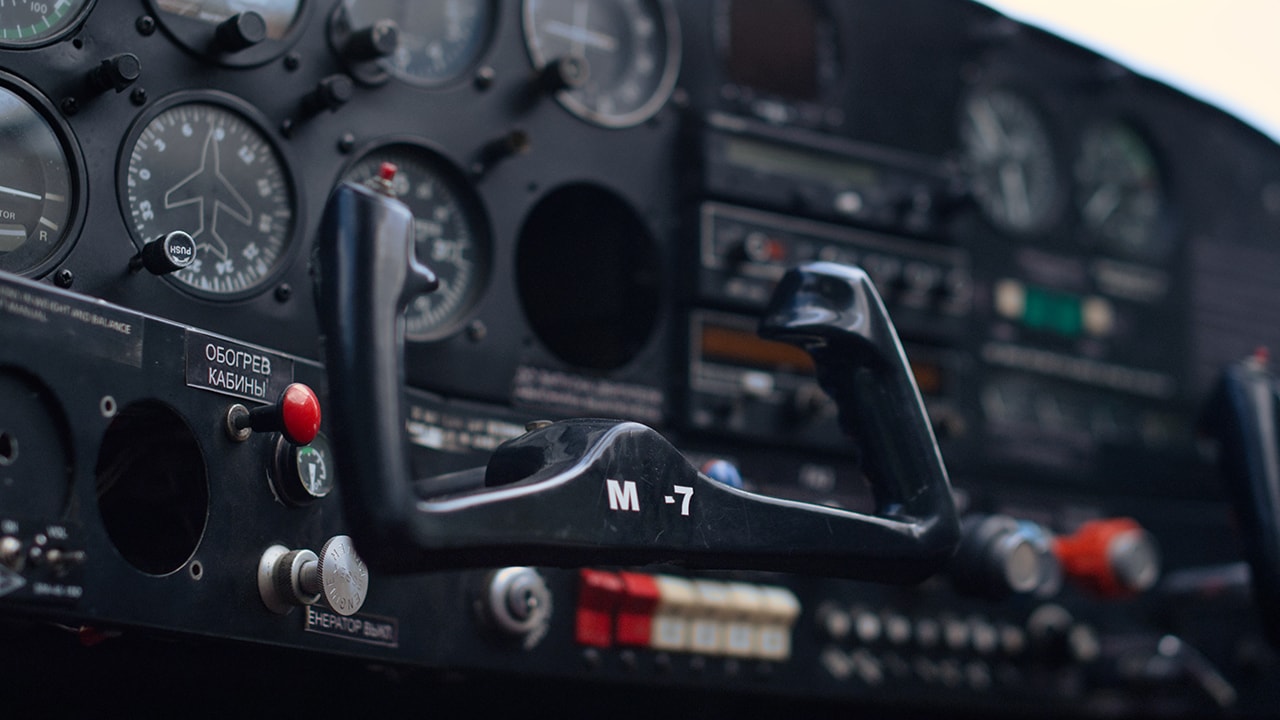
Airspeed Indicator Markings for Specific Flight Phases
Takeoff
During takeoff, the airspeed indicator is crucial to achieving a safe ascent. It helps pilots ensure they reach the correct speed for lift-off, reducing risks during this dynamic phase. Proper use of the airspeed indicator ensures both optimal performance and passenger safety from the very start of the flight.
Climb
As the aircraft climbs, the airspeed indicator continues to play a vital role. Pilots rely on it to maintain the right climbing speed, which is essential for efficient fuel usage and smooth altitude gain. This ensures the aircraft remains stable and energy-efficient on its path to cruising altitude.
Cruise
In the cruise phase, the airspeed indicator supports safe navigation and stability. By monitoring the airspeed, pilots can maintain the ideal cruising speed, ensuring the aircraft operates efficiently while conserving fuel. This balance is key to a successful journey.
Descent
As the aircraft begins its descent, the airspeed indicator helps manage the rate of descent. By keeping a close eye on airspeed, pilots can ensure a smooth approach, balancing safety and passenger comfort as they prepare for landing.
Approach
Approach involves preparing the aircraft for landing, a critical phase that demands precise control. The airspeed indicator is vital in managing speed to blend stability with safe descent, guiding the plane smoothly towards the runway.
Landing
Finally, during landing, the airspeed indicator helps achieve a safe speed at touchdown. Proper airspeed ensures a controlled landing, bringing the journey to a secure and comfortable conclusion for everyone on board.
Instrument Errors and Limitations
The airspeed indicator is a vital instrument for speed information, but it’s not error free. Pilots need to be aware of these potential errors to fly safely and accurately.
-
Instrument Errors: Calibration or mechanical malfunction can affect the airspeed indicator. Regular maintenance and calibration are key to minimizing these errors.
-
Static Pressure Errors: The airspeed indicator uses static pressure readings which can be affected by blockages or malfunction of the static port. Make sure the static port is clear and functioning properly for accurate readings.
-
Dynamic Pressure Errors: Changes in air density or temperature can affect the dynamic pressure readings. Pilots need to account for these variations especially when flying at different altitudes or weather conditions.
-
Air Density Errors: High altitude or high temperature conditions can reduce air density affecting the airspeed indicator. Pilots need to be aware of these conditions and adjust accordingly.
-
Ram Air Pressure Errors: The airspeed indicator also uses ram air pressure which can be affected by changes in airspeed or altitude. Make sure the pitot tube is unobstructed and functioning properly to maintain accurate readings.
Now you know the errors and limitations, take proactive steps to get accurate readings. Maintenance, calibration and awareness of the environment is key.
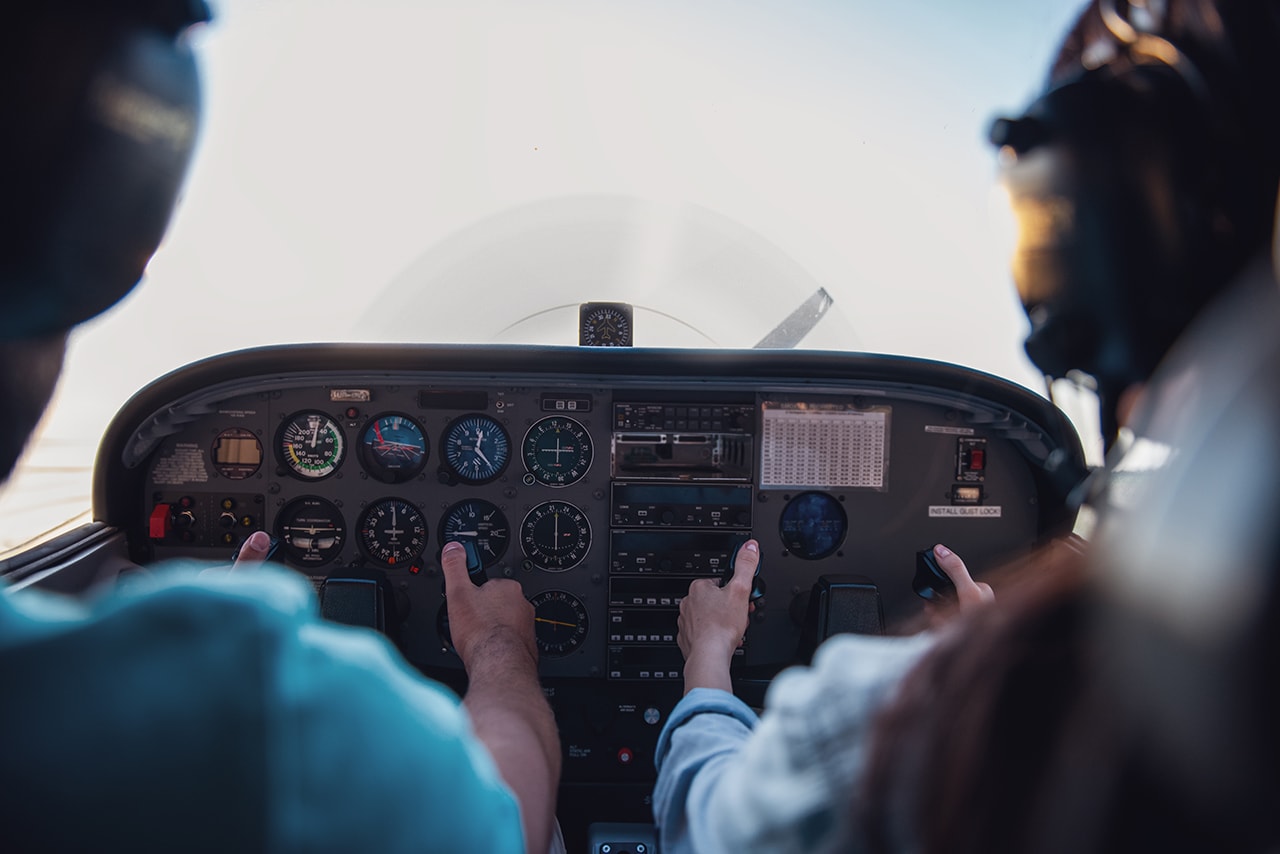
Single-Engine Operations
Flying a light twin on one engine requires skill, knowledge and the right use of key performance speeds like VYSE. This speed is critical as it allows you to climb or at least descend and control the aircraft when one engine fails.
By flying VYSE, you can gain altitude even in the worst case and have a safety margin to get back to the airport or manage the emergency.
VMC on the other hand shows the importance of control after an engine failure. This speed is the threshold below which control of the aircraft becomes more and more difficult.
By flying above VMC pilots ensure the safety and stability of the aircraft and can maneuver more confidently even with one engine out. Understanding and using these speeds turns a potentially dangerous situation into a manageable one and allows pilots to prioritize safety for all on board.
Conclusion
The airspeed indicator is the most important instrument in the cockpit, it helps you make informed decisions during flight. It can’t be overstated, it’s key to safe flying.
Airspeed is part of flight safety; you can control and stability by understanding airspeed. By knowing airspeed, you can measure your flight parameters, so you don’t go over critical speed or too slow and stall.
The indicator measures airspeed which is closely related to lift. Through this measurement it helps you to maintain the right speed for stable and efficient flight, balance lift and control with precision.
In the end the airspeed indicator prevents navigation mistakes and makes smooth maneuvering. It gives you the confidence and insight to handle any flight scenario, safe for the aircraft and everyone on board.
